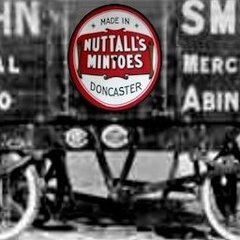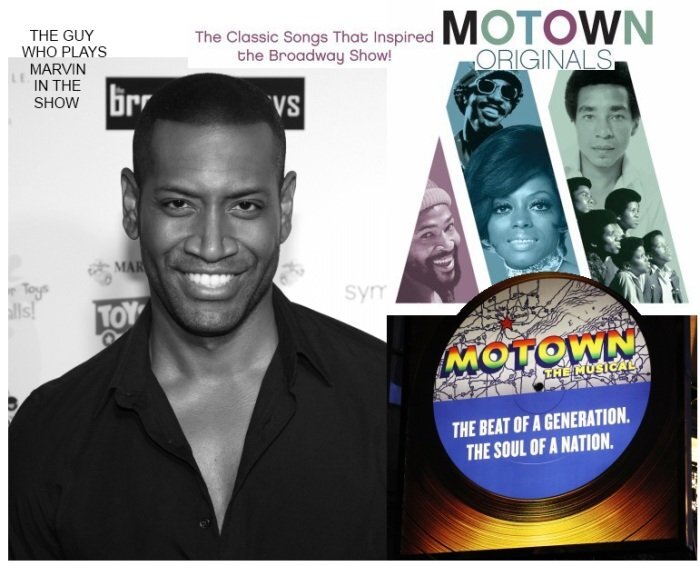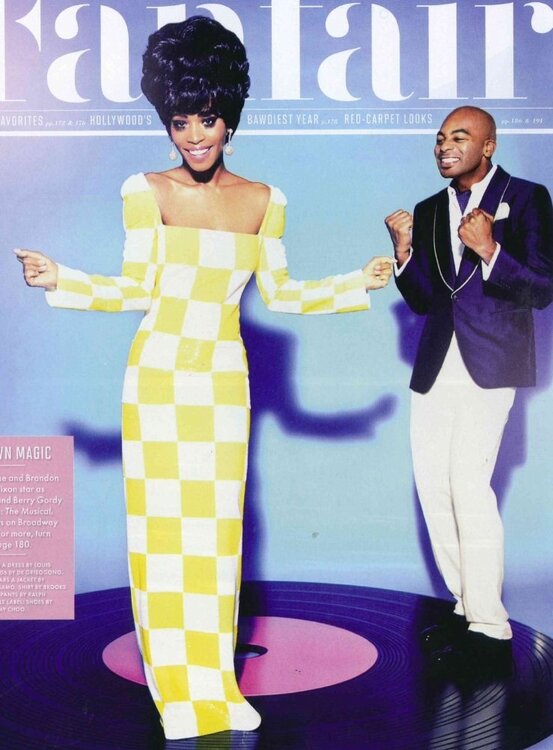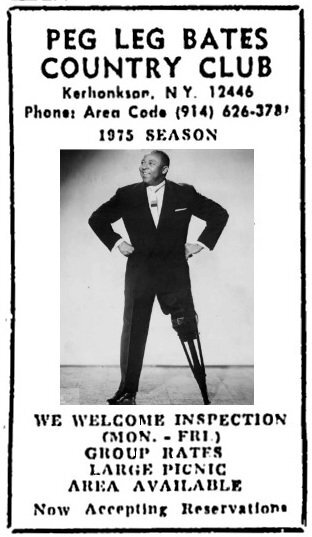Everything posted by Roburt
-
Motown - The Musical
There's a new CD due out to coincide with the opening of the show next month ..... No track listing yet but It makes sense for it to include the songs featured in the show (though as the CD just states 'Songs that inspired the Broadway show' -- it may just be the big 60's hits again). The guy who's playing Marvin looks much more like Smokey to me (especially if he has an Afro wig on stage).
-
New Additions To My Youtube Channel
Some good tracks up there Greg .......... really like Willie Burley & the Cousins 'Don't let the devil fool you' (Landmark).
-
Sidney Barnes
........ POSTED UP ON FACEBOOK by Sidney ............ Just talked to an old friend in LA who says, he's got some people interested in doing a docudrama of my life from childhood to now, based on my autobiography..Umm, I wonder who'd play me. Of course it would probably end with me next year winning a Grammy for new artist of the year or something. Now wouldn't that be a cool ending. I'd guess that way less than 10% of TV / film projects actually reach fruition, but this could be really good if it makes it to the 'shooting stage'. MIND YOU ........... there must have been about a dozen projects to make a film of Otis Reddings life floated down the years (Billy Ocean was talked of as the guy to play Otis when his records were big US hits) and none ever progressed very far. Guess the investors much prefer projects about Karen Carpenter than ones about old black singers.
-
Motown - The Musical
A pic of the people playing Diana Ross & Berry Gordy in the musical (which opens in NY soon) .... ...... the lady certainly has caught the 'Diana Ross' look quite well ..... don't know about the guy (I know its about his acting ability, but they don't seem to bother about him looking anything like BG)
- News: Andantes Article
-
Billy Stewart - Sittin' In The Park - Chess/cadet
"Sitting In The Park" was originally released in early June 65. Light Blue label Chess 45's came later (around Nov / Dec 66) though old 45's were re-pressed by the company with blue Chess labels. Early 45's on the label (mid 50's) were silver / blue labels. Dark blue labels were around in 57 to 61/62/63 (Chess written down left hand side of label). Orange / yellow labels were then used, from about 1961 to as late as 64 (on blues 45's rather than the soul releases near the end I believe).. Black labels started to replace orange / yellow labeled ones around 1964. But SITP was a massive hit & so will have been pressed up at 2/3 different plants from the early days after its release. The 45 also sold well in the pop field & the 45 made it into the Top 30 of the US pop charts .... so the number being pressed up during that period would far exceed usual Chess 45 pressing levels. I would guess that most of the 1st press versions of this 45 had a black label BUT some could have been rushed out (to meet the great demand) using orange / yellow labels that were still laying around. To me, originals are the ones with black labels BUT no doubt someone else will dispute that.
-
Caribbean Deep Soul
Jackie Opel spent quite a lot of time in Jamaica in the 60's but he returned to his native Barbados around 1967. There he acted as mentor to a upcoming local singer -- Jigs Kirton. Jigs cut some Bajan tracks but eventually headed out to join his older sister in Canada (67). He made an immediate impact on the Ottawa soul scene and established a name for himself. In 69, he headed out to New York and hung out at the 521 Club in Brooklyn (making musical contacts). After performing in local NY clubs for a while, he heard from a friend back in Canada that Sam & Dave were up there and in dire need of a drummer. Jigs took the job and toured the US and Europe with Sam & Dave for a while. He would head back to NY in his time off from S&D's band and here some guys came looking for him at the 521 Club (73). Before he knew it, he was asked to join the Invitations and was recording "They Say the Girls Crazy" with them. Some time later, Lew Kirton went solo. While he was away from Barbados, His old mentor Jackie Opel was killed in a car crash in Bridgetown in 1970.
-
James Brown Live Performance
The 1971 concert at the Apollo was released in 71 & a bit later as well ..... 'Revolution Of the Mind -- Live @ the Apollo) ..... .see ........ https://www.discogs.com/James-Brown-Revolution-Of-The-Mind-Recorded-Live-At-The-Apollo-Vol-3/master/98805
-
James Brown Live Performance
JB put out quite a few LIVE albums. The most famous onea are his 'Live @ the Apollo' series. The 1st dates from early 63 (recorded in late Nov 62). Then there's 'Pure Dynamite -- Live @ the Royal' (released in Feb 64 but recorded in Nov 63 @ the Royal Theatre, Baltimore). To follow those were :- 'Live @ the Garden' (67) AND 'Live @ the Apollo 2' double LP (67), 'Sex Machine' in 69 and 'Live @ the Apollo Vol.3' in 1971. ....... TAKE YOUR PICK... as to which one it is that you want.,
-
Tap Dancing And Northern Soul :-)
Here's a few moves to incorporate into your dance floor antics ...........
-
Tap Dancing And Northern Soul :-)
Of course, Cholly Atkins was a top tap dancer for many years on the US chitlin circuit (as part of a duo). He went on to sort out stage acts for all the top black groups (every Motown outfit, the O'Jays, etc.) BTW ......... wonder if there will ever by a childrens book about a NS dancer ????? .......... here's one about a famous black US tap dancer ............
-
Sitting In The Park 1-27-2013
Just checked and Peg Leg Bates had a 45 out on Blue Chip out of Michigan -- "THE FUNNY OL' HOUSE / SAVE YOUR SORROW". He sings & DANCES on those tracks !!!!
-
Sitting In The Park 1-27-2013
The Eddie Holloway track is STUNNING !!! Eddie was based in Miami in the 60's & I posted up an ad for one of his shows on the 'Old Miami Shows' thread a while back. He was also the lead vocalist on the 3rd Guitar's big Rojac cut -- "Baby Don't Cry" (he wrote the song).
-
Sitting In The Park 1-27-2013
Peg Leg Bates ..............
-
Sitting In The Park 1-27-2013
RE: Mad Hatters - People all over the world - Peg Leg Bates Peg Leg Bates was a famous US 'one legged' dancer. He danced for the British King twice in the 30's and toured the UK again in the 50's with Louis Armstrong. He didn't stop touring till he was in his 50's (around the mid to late 50's). He owned and operated the Peg Leg Bates Country Club in the Catskill Mountains from 1951 to 1987 (being the first black resort owner in the area). The club attracted folk (in the summer) from all over the greater NY / NJ area as well as people from as far away as Baltimore & the like. ..... SEE article published about him on his passing .......... https://www.nytimes.c...dies-at-91.html I guess he hired the Mad Hatters to play his club & was so impressed, he arranged a recording session for them. Any idea when this 45 dates from (70's ?) and if there are any other Peg Leg Bates related records / labels ?? At Peg Leg Bates club in 1985, the main singer was Rene Bailey (who has sung at the resort since 1972). She was backed by a 'funk-flavored jazz' outfit Richard Diamond & the Mad Hatters (can't find out how long they had been the club's resident band). So I guess this is the group who had cut "People All Over the World".
-
Rarest Uk Sue 45S
I would guess that all their 45's were initially pressed up in the same numbers (maybe 1000 copies but thats a real shot in the dark). However, lots of Sue 45's sold well in the immediate period after release OR over an extended period of a few years (Mockingbird; Thats How Heartaches Are Made; Its Gonna Work Out Fine; Daddy Rolling Stone; I Can't Stand It; Ya Ya; Harlem Shuffle; Little Piece of Leather; ETC). So all those would definitely have had 2nd / 3rd presses. Of course not all copies of Sue 45's will have sold and I'd say that lots of unsold stock would have been junked in the late 60's / early 70's. So its really a guessing game as to which (these days) are the rarest. The factors being that amongst those 45's that sold in small quantities back in the day, which have had a lot of copies destroyed over the last 40 years. It certainly can't be worked out from the prices each Sue 45 commands, as lots of the 'really rare' items will not be much sought after today (except by label completists).
-
Reggae Versions Of Soul Classics
OK, I'll slip back into the 60's (though it was released here in the 70's on Nu Beat) ...... ALTON ELLIS ......... "La La La Means I Love You" ...............
-
Reggae Versions Of Soul Classics
It'll annoy Pete but lets move forward to the 70's ......an AL GREEN clone -- now what was his 'imaginitive' name ?? ... Oh yea .. ..........AL BROWN .............. ..
-
Reggae Versions Of Soul Classics
........... NOT SOUL AT ALL .......... but a massive mid 60's mod club sound that I had to slip in .......... .... its 15th April 1967 again, two in the morning & we're all at the Mojo niter in North Sheffield waiting for Geno to come on stage when Stringfellow spins this .....
-
Reggae Versions Of Soul Classics
No vocals on this .... so the 'backing track' has to 'stand on its own feet' ....
-
Reggae Versions Of Soul Classics
Afraid its way too 'tinny' for me Pete. Beat you to the 67 version of "Queen Majesty" !!
-
Reggae Versions Of Soul Classics
An earlier version of the above that again features the Techniques .......
-
Reggae Versions Of Soul Classics
Here's a better effort from Pat Kelly .... a Curtis Mayfield (Impressions) song .....
-
Reggae Versions Of Soul Classics
Can't say that this is my fave version of "Dark End of the Street" ......... the backing is just TOO amateurish .... There has to be a better reggae version ...... no doubt Pete S will point me in the right direction.
-
Reggae Versions Of Soul Classics
Here's one thats always been a fave of mine ........... bought as a new release a FEW years back ...... We're just like Williams & Watson .... two (bros) for the price of one






